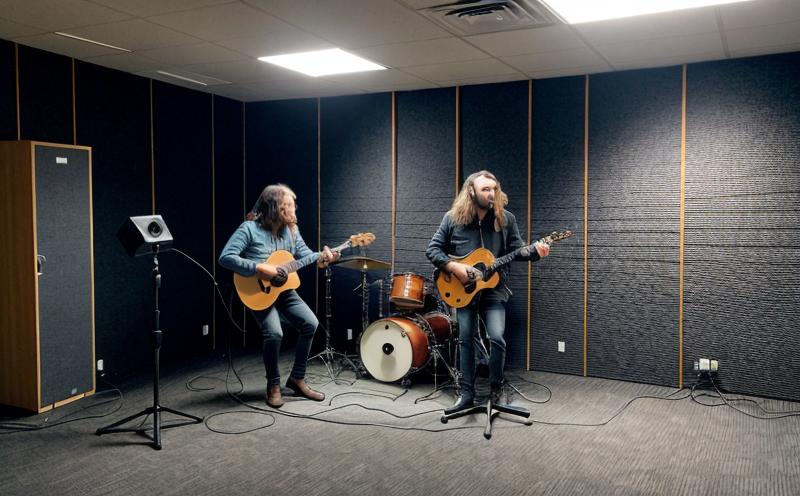EN ISO 11690-1 Occupational Noise Assessment in HVAC
The ISO standard EN 11690-1 specifies the methodology for assessing occupational noise exposure within HVAC (Heating, Ventilation and Air Conditioning) systems. This service is designed to ensure compliance with international guidelines aimed at protecting workers from hazardous noise levels that can lead to hearing damage or other health issues.
The standard covers various aspects of noise assessment in HVAC equipment, including the measurement techniques for determining sound pressure levels (SPL), the calculation of noise exposure indices such as the daily personal noise exposure level (Lp,eq), and the evaluation of noise protection measures. The scope is particularly relevant to R&D engineers who need to design quieter systems or quality managers looking to ensure compliance with occupational health and safety regulations.
The testing process involves multiple steps aimed at providing accurate data on noise levels within HVAC equipment. It begins with a detailed assessment of the equipment's operational parameters, including fan speed settings, air flow rates, and other variables that can influence sound production. The equipment is then placed in controlled conditions to simulate real-world usage scenarios.
Once setup, the acoustic testing instruments are calibrated according to ISO standards before being deployed for continuous monitoring over a specified period. This ensures consistent data collection under standardized conditions which align with international guidelines such as ISO 9612:2018 and EN 374-2. The resulting measurements provide insights into potential noise hazards, allowing for informed decisions regarding design modifications or operational adjustments.
For accurate assessment, the test setup must be representative of actual working conditions to ensure reliable results. Therefore, it's crucial that any modifications made during testing do not alter these conditions significantly. Compliance officers responsible for maintaining workplace safety should familiarize themselves with both the technical requirements outlined in EN 11690-1 and its supporting documents.
A key aspect of this service is providing detailed reports based on the collected data. These comprehensive reports outline all findings related to noise levels within HVAC equipment, including comparisons against established limits set by relevant standards like OSHA (Occupational Safety and Health Administration) or EU regulations. By offering such thorough documentation, we support clients in meeting regulatory requirements while also promoting best practices for reducing workplace risks associated with excessive noise.
To summarize, the EN 11690-1 service provides a robust framework for assessing occupational noise exposure in HVAC systems. Through careful planning and execution, this process helps identify potential hazards early on so that appropriate actions can be taken to mitigate them effectively. This not only protects workers' health but also contributes positively towards overall safety culture within organizations.
Benefits
- Avoids Non-Compliance Penalties: Ensures adherence to international occupational noise exposure limits, avoiding costly fines and legal repercussions.
- Promotes Worker Safety: By identifying hazardous noise levels early, appropriate protective measures can be implemented promptly.
- Enhances Reputation: Demonstrating commitment to employee well-being enhances an organization's reputation among stakeholders.
- Sustains Productivity: Reduced risk of hearing impairment leads to higher job satisfaction and better performance from employees.
Environmental and Sustainability Contributions
- Eco-Friendly Design: By reducing noise levels, we encourage the development of more efficient systems that consume less energy without compromising on performance.
- Energy Efficiency: Quieter equipment often operates more efficiently, leading to lower power consumption and reduced carbon footprint.
Use Cases and Application Examples
| Case Study | Description |
|---|---|
| Hospital HVAC Systems: | Assessing noise levels in hospital settings where quiet ventilation is critical for patient comfort and recovery. |
| Data Centers: | Evaluating noise emissions from data center cooling units to ensure minimal disruption of sensitive operations. |





